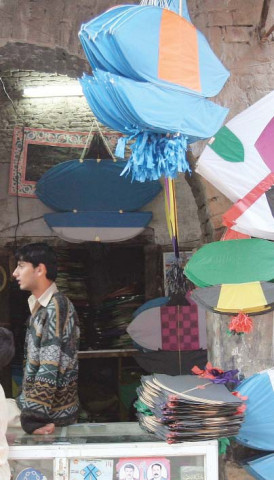Toronto park bans kite flying
“No kite flying allowed,” reads a bright yellow sign in a Toronto park.

Toronto park bans kite flying
Kite flying is a favourite pastime of many local immigrants from Afghanistan, Pakistan, India, Bangladesh as well as China.
On weekends, they would bring their kites to the lush green 32-hectare park. Friends and families often joined them for a picnic or barbecue, and to bask in the sun.
But for some kite flying is not the peaceful sport beloved of children around the world, rather it is a more serious game known as kite fighting which can involve dozens of teams and hundreds of kites.
With highly trained teams, kites fitted with sharp nylon strings are launched into the air to slice through rival kites, with fights lasting from just a few minutes to a few hours.
But the summer fun came to a crashing halt on August 17 when the ban was introduced, coupled with a 100 dollar fine for any violations.
Toronto councillor Chin Lee told AFP the city enacted the measure due to safety concerns, saying Milliken park was littered with pieces of sharp nylon kite strings that risked cutting people’s feet and strangling birds.
“I received at least 100 complaints from people over last three years,” he said.
The ban is to be reviewed in a couple of weeks. And dozens of protestors have pleaded with Lee, the main proponent of the ban, to overturn the measure and allow kites to soar again over Milliken Park.
“Let us fly kites” and “Don’t ban kite flying, ban only synthetic string,” their colourful placards read at a recent rally.
Lee, who is of Malaysian-Chinese heritage, showed up at the rally holding rolled-up kite strings the size of baseballs in each hand, and voiced sympathy with their plight.
“I myself have flown kites since I was a three-year-old kid,” he said.
“The problem is not with the kites, the problem is with the kites’ strings,” he explained, saying strings were too often left on the ground after kite fighting matches littering the park. “People are still complaining. They send me emails.”
“We need to sit down with all stakeholders and come up with a solution that works for everybody,” he said, promising to try to accommodate both kite flying enthusiasts from the largely ethnic Chinese and South Asian neighbourhoods, and opponents.
In the fights, which came to popular notice globally in the bestselling book and film The Kite Runner by Khaled Hosseini, kites are flown to a certain distance in the sky. When ready to fight, the kite flier pulls on his line as fast as possible and at the same time tries to cut any other kite lines that cross his path.
In India, Pakistan and Bangladesh, kites are flown daily from rooftops of houses, in open fields, and also at large festivals such as Basant, which heralds the start of spring.
Milliken is the second Toronto park to prohibit kite flying. Seven years ago, the city banned the sport at Bluffer’s Park on Lake Ontario after complaints of sliced kite strings in the lake, tangling boat propellers.
Kite flying is still allowed at several other city parks, but locals who have been coming to Milliken Park for many years insist on continuing their popular sport at this location close to home.
Gogi Malik, 40, a Pakistani-Canadian and president of Gogi Fight Club, said he was “very upset” over the ban. “It is something that should have never been done,” he told AFP.
Gogi Fight Club members have been flying kites at Milliken for six years, he said. “We always use paper kites and cotton strings and clean up all litter at the end of the kite fighting,” Malik said.
Published in The Express Tribune, September 3rd, 2010.


















COMMENTS
Comments are moderated and generally will be posted if they are on-topic and not abusive.
For more information, please see our Comments FAQ